Figure Item Number: 1259/8 from the MOA: University of British Columbia
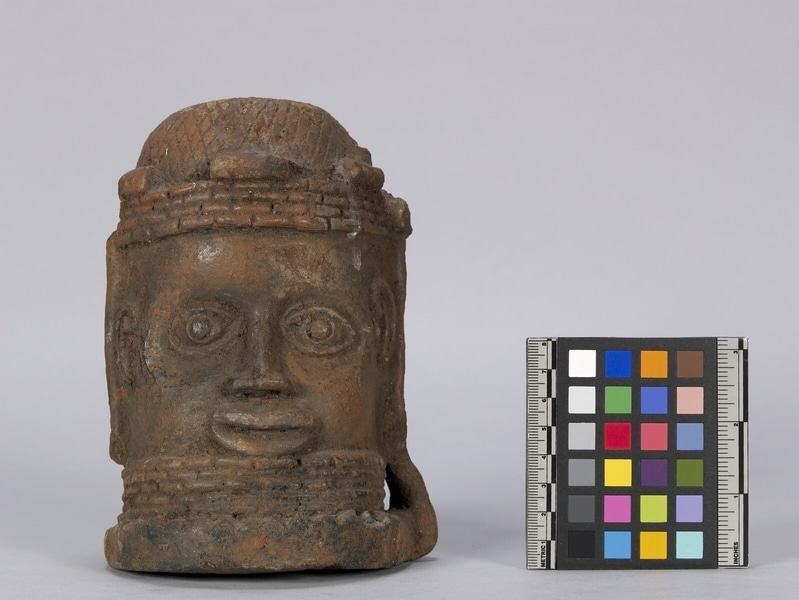
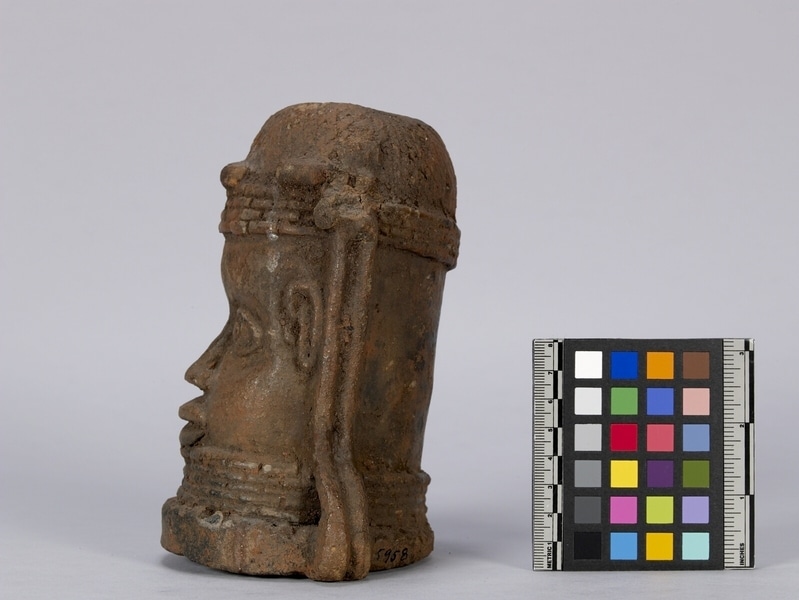
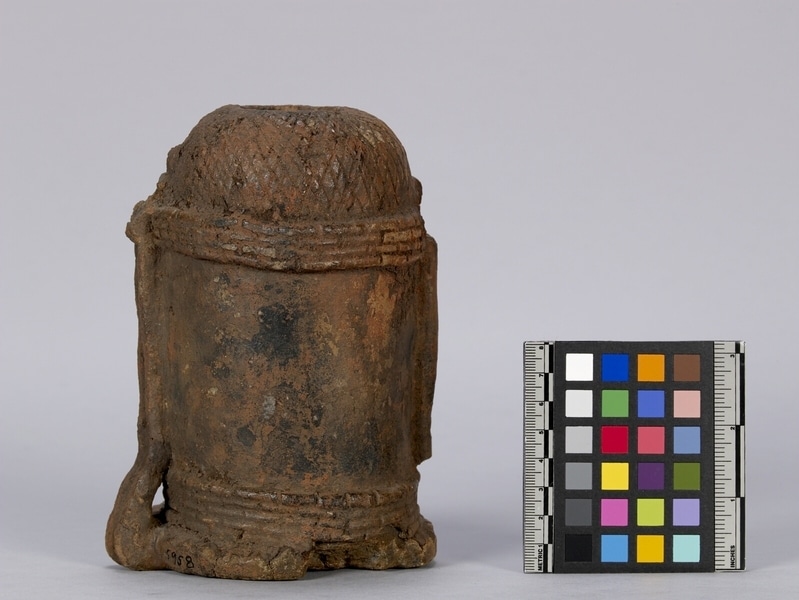
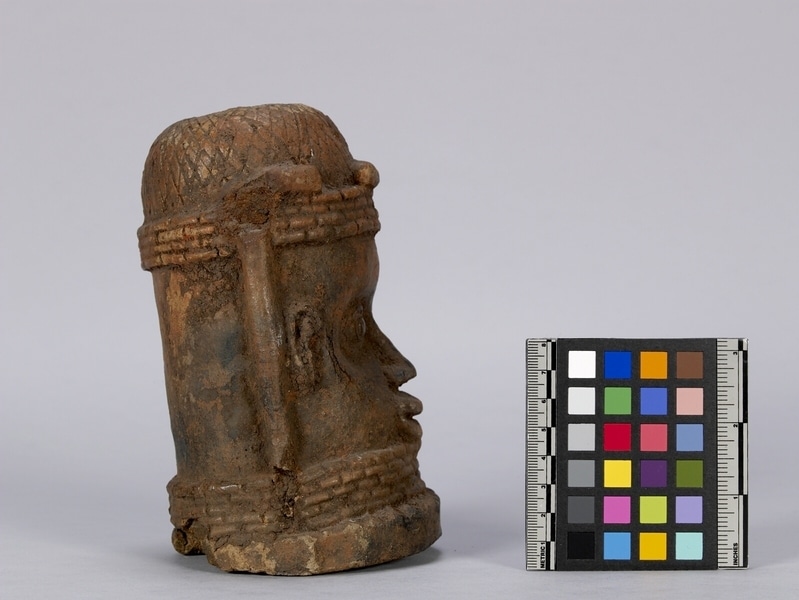
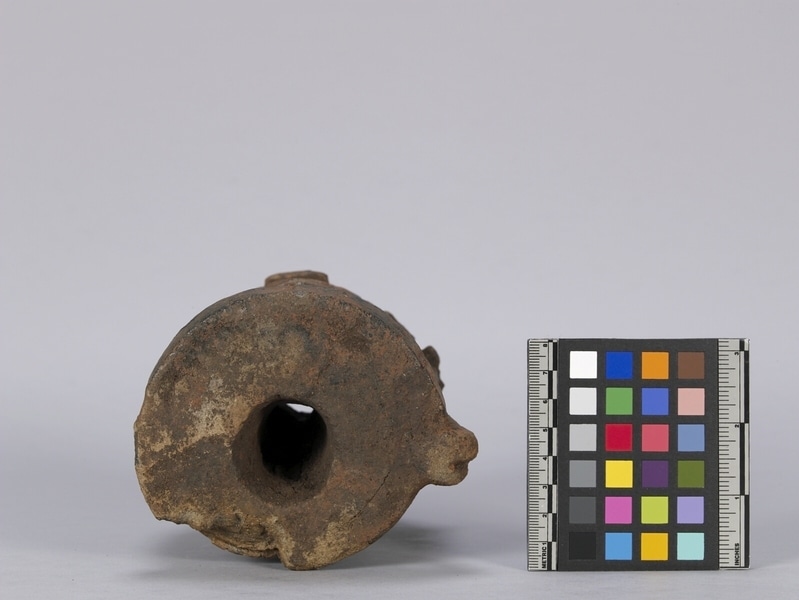
Description
Hollow, cylindrical figure of a face with protruding features; eyes are recessed. Above and below face are rows of brickwork that go around entire circumference; face is only on one side of cylinder, other side is plain; above top layer of brickwork is a domed area decorated with incised diagonal crosshatching.
History Of Use
Heads figures were created to commemorate the dead. Different materials represented different types of individuals being commemorated. Bronze heads were produced by the royal guild of bronze casters, and they were made for a member of the court. Terracotta heads were used by bronze casters to commemorate their own ancestors, while chiefs used wood. The memorial head tradition became significant in the 16th century, and over time they became more stylistic and elaborate.
Iconographic Meaning
The brick patterns above the forehead and below the chin are meant to depict coral beads, which typically adorn the bodies of court officials. Historically, only the Oba had the authority to grant permission to others to wear coral beads. According to oral history, during the 13th and 14th centuries, Oba Ewuare I was believed to have defeated the water goddess Olokun in a fight. She then gifted him corals from the river and told him to give them to his chiefs. Corals are still worn in Benin City today, however it is a common part of attire worn among many ethnic groups in the region. In royal ceremonies, coral beads are still significant.
Item History
- Made in Nigeria
- Owned by Walter C. Koerner before January 7, 1988
- Received from Walter C. Koerner (Donor) on January 7, 1988
What
Who
- Culture
- West African
- Previous Owner
- Walter C. Koerner
- Received from
- Walter C. Koerner (Donor)
Where
- Holding Institution
- MOA: University of British Columbia
- Made in
- Nigeria
When
- Ownership Date
- before January 7, 1988
- Acquisition Date
- on January 7, 1988
Other
- Item Classes
- ceramics
- Condition
- fair
- Accession Number
- 1259/0008